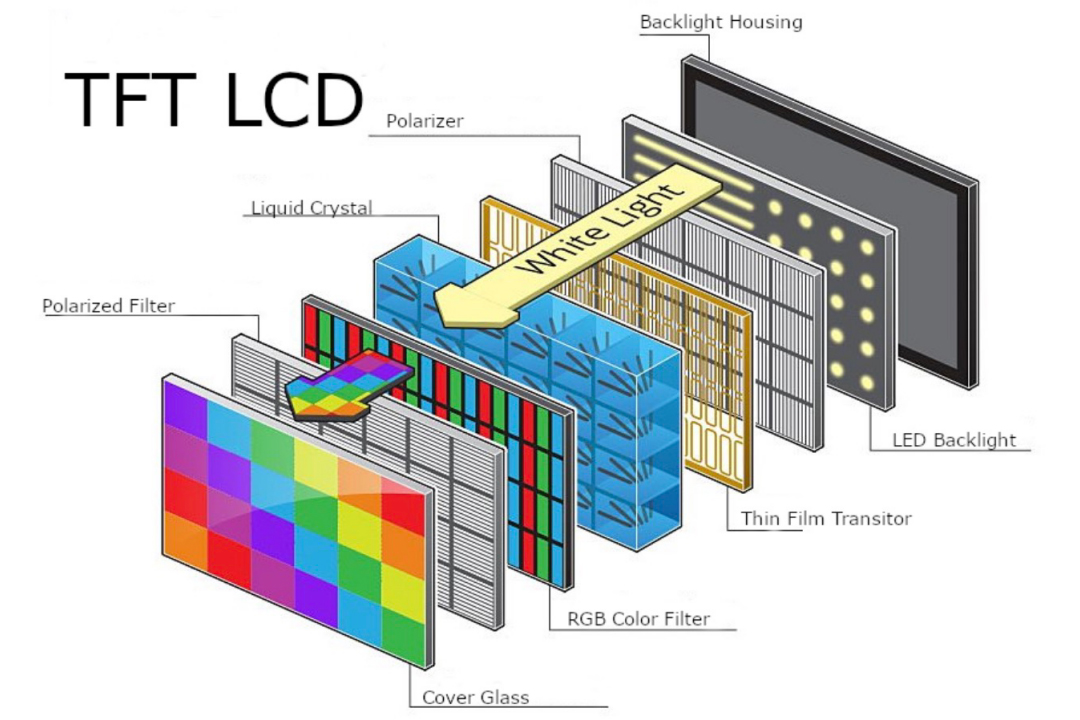
TFT: Thin Film Transistor
LCD: Liquid Crystal Display
TFT LCD consists of two glass substrates with a liquid crystal layer sandwiched in between, one of which has a TFT on it and the other has an RGB color filter. TFT LCD works by utilizing thin-film transistors to control the display of each pixel on the screen. Each pixel is made up of red, green, and blue subpixels, each with its own TFT. These TFTs act like switches, controlling how much voltage is sent to each sub-pixel.
Two glass substrates: TFT LCD consists of two glass substrates with a liquid crystal layer sandwiched between them. These two substrates are the main structure of the display.
Thin-film transistor (TFT) matrix: Located on a glass substrate, each pixel has a corresponding thin-film transistor. These transistors act as switches that control the voltage of each pixel in the liquid crystal layer.
Liquid crystal layer: Located between two glass substrates, liquid crystal molecules rotate under the action of an electric field, which controls the degree of light passing through
Color filter: Located on another glass substrate, it is divided into red, green, and blue subpixels. These subpixels correspond one-to-one to the transistors in the TFT matrix and together determine the color of the display.
Backlight: Since the liquid crystal itself does not emit light, TFT LCD needs a backlight source to illuminate the liquid crystal layer. Common backlights are LED and Cold Cathode Fluorescent Lamps (CCFLs)
Polarizers: Located on the inner and outer sides of two glass substrates, they control the way light enters and exits the liquid crystal layer.
Boards and driver ICs: Used to control the transistors in the TFT matrix, as well as to adjust the voltage of the liquid crystal layer to control the content displayed on the screen.
Post time: Nov-20-2024
 sales@hemoled.com
sales@hemoled.com +86 18926513667
+86 18926513667
